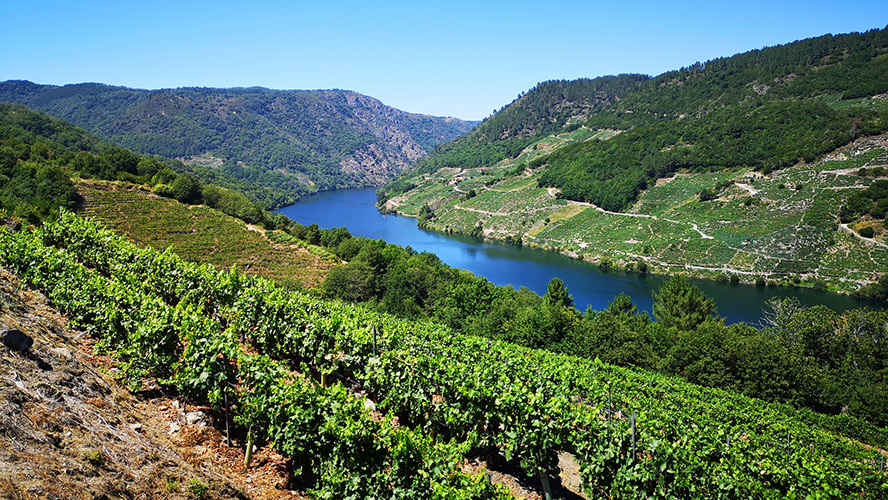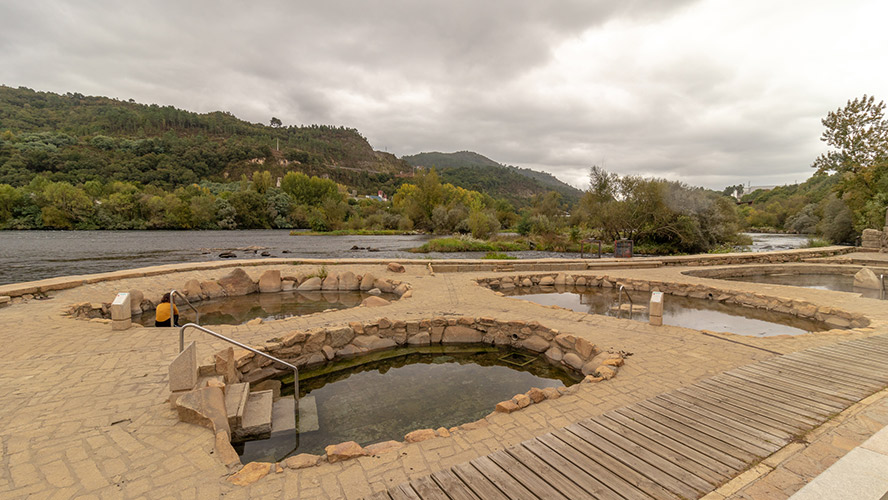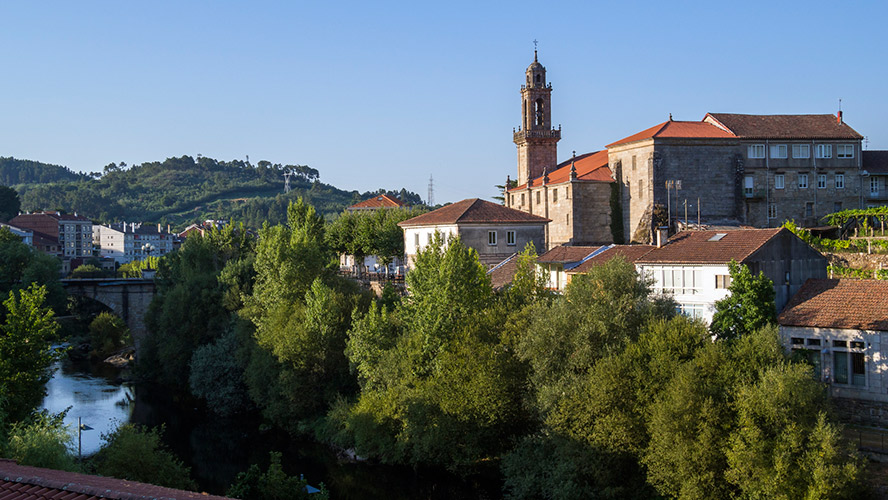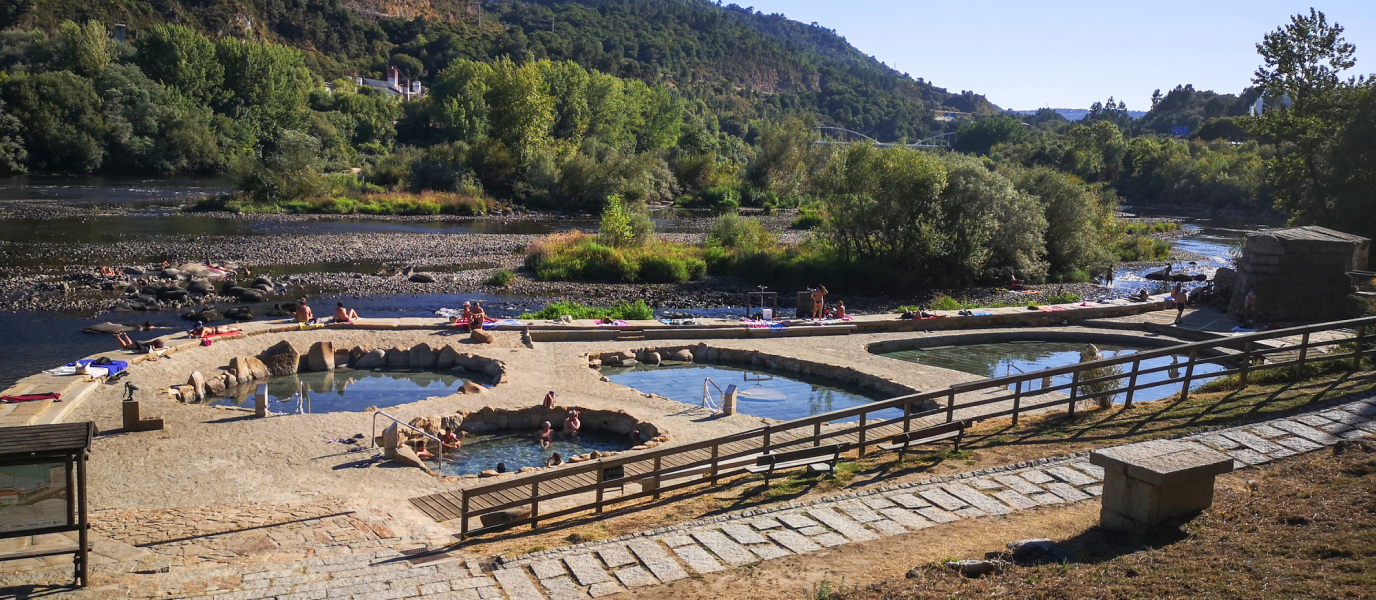Few people know about the wide variety of natural springs in Ourense, in Galicia, which have been enjoyed since even before the Romans, a civilization famous for its love of taking thermal baths and the related health benefits.
Even Ourense’s name comes from its incredible hot springs: “aquae urentes” (scalding waters), emphasising the importance of this unique natural phenomenon. In fact, according to recent studies, the city has as many as 70 hot water springs and up to three million litres of water flow here daily, meaning it has the second most thermal springs in Europe after Budapest.
Natural environment of Ourense and Ourense province
The history of springs at Ourense can be traced back to ancient times, to even earlier than the Roman invasion, and there are many theories and legends about their origin. Scientists have explained that the natural phenomenon is due to rainwater filtering through cracks in granite found in the soil. The water is heated underground and rises back to the surface at temperatures that range from 40˚ to 70˚, depending on the pressure it has been subjected to.
But literature has other ideas. Legend tells of a volcano near the As Burgas springs, one of the oldest known springs, under Montealegre mountain – it’s said that one day the devil will make it erupt but, until then, he’s just heating the water. It’s also said that the boiling springs come directly from the feet of the Holy Christ sculpture in Ourense Cathedral and that’s why the water is miraculous. The legend of Ana Manana is another important part of people’s collective imagination; she was a fantastical being who was shaped like a beautiful woman and lived in the springs at Maimón pool.
Whatever the truth may be, each day over three million litres of medicinal water flow through Ourense’s thermal springs, an amount only surpassed in Europe by Budapest.

A Chavasqueira
These thermal baths are one of the oldest and closest to the centre of Ourense, so they are easy to get to and popular with locals. This is the first complex on the Minho River Thermal Route, just a few metres past the Millennium Bridge.
The water in these stone outdoor pools has a temperature of around 40˚. There are changing rooms, lockers for storing your clothes and even an area for sunbathing when the weather is fine.
A Chavasqueira is also known as the “Bishop’s Hot Springs” because it was Cardinal Quevedo who pushed for the pools to be created so that sick people who visited the old spa could be treated. He also took advantage of the building work to have a small stone temple built for his personal enjoyment that can still be seen today.

Muíño da Veiga Thermal Baths
These thermal baths are next to an old wooden water mill that has been fully restored. The baths are named after it – muíño means mill in Galician – and it also adds character to the area, setting the baths in an exceptionally beautiful landscape.
The complex has five pools of various size and temperature. In fact, one of the springs has the hottest thermal water in the entire peninsula at a piping hot 72˚. There’s a cold water pool for contrast baths and the others have an average temperature of 40˚.
The water at Muíño da Veiga is low in minerals and is alkaline, containing sodium bicarbonates, fluorides and silicates, an extra health bonus from baths that are already extremely relaxing.
You can get to Muíño da Vega by car and park in a nearby car park, or take the Tren de las Termas [Thermal Baths Train], the best way to get around the various baths in Ourense.
Outariz Thermal Baths
Outariz thermal bath complex is far more elaborate than others in Ourense. Its design is based on Japanese spa culture that believes in achieving full harmony with nature. The thermal baths have eleven outdoor pools and three indoor pools that are organised into two set circuits: the ‘zen’ circuit, which is perfect if you’d like to relax, and the “celta”, which has moving waters and is designed to release tension and help tight muscles.
The baths are right by the Minho River and also have a wide range of massages and treatments, plus an incredible terrace where you can enjoy the lovely natural setting after your restorative bath.
Outariz has a capacity for 180 guests and an events room.
Burgas de Canedo
Burgas de Canedo is the largest thermal baths in Ourense. They border Outariz and are also on the right bank of the Minho, although the car park is on the left bank. The baths are reached by walking over a walkway.
The complex has three large hot water pools – in some parts the temperature can reach 60˚ – and a cold pool for contrast baths. It also has changing rooms, lockers and toilets, and the water is rich in sodium bicarbonate, fluorides and sulphates, benefiting the body and soul.
Barbantes Thermal Baths
The thermal baths at Barbantes are set in a recreation area with a large garden with picnic areas and benches where you can sunbathe or simply sit and relax. The complex has three temperate water pools that range from 21˚ to 28˚ depending on the time of year. There are thermal water showers and two wooden huts with bathrooms and a bar.
The water is suitable for treating arthritis, rheumatism and skin conditions; the complex has a car park so is easy to reach by car.
Prexigueiro Thermal Baths
his complex is slightly further away from Ourense in Ribadavia region. Also designed in line with the Japanese philosophy, it has a Spanish twist because some of the treatments make use of the health benefits of the treixadura and mencia grape varieties – and they aren’t for drinking.
It has five hot water pools, a spa and two cold water pools for contrast baths. Each of the pools is named after a Japanese temple and it’s organised so that visitors follow the different stages of Japanese thermal bathing. The complex has a wide range of treatments in hydromassage, vinotherapy and seaweed baths.
Prexigueiro is one of the most visited thermal baths but visitors must pay a €5.70 entrance fee.

The Thermal Baths Train
This is the best way to travel from thermal baths to thermal baths or to visit a particular complex. Trains depart from the Plaza Mayor in the heart of Ourense, next to the legendary As Burgas springs, and stop at all the hot water pools along the right bank of the Minho River.
As it travels along the Thermal Baths Route you can also see historical parts of Ourense and a particular treat is crossing the Roman Bridge by train, the only permitted mode of transport. It’s a great way to get to the A Chavasqueira, O Muíño da Veiga, Outariz and Burga de Canedo baths.
But if you’d prefer to stretch your legs, it takes about 40 minutes to walk the six kilometres from the Plaza Mayor to the last baths at Outariz and Burga de Canedo.
Where to stay in Ourense
One of the best places to stay is the four-star Barceló Ourense because it’s right in the city centre. The Thermal Baths Train station is just a few metres away so it’s easy to enjoy the wonderful healing waters of this Galician city.
Guest rooms at the Barceló Ourense are the largest in the city and are fully furnished to B-Room standards, a concept that goes far beyond rest and includes a pillow menu, rain showers, tea and coffee facilities, high speed Wi-Fi and an exceptionally comfortable mattress.
The hotel also has a fitness room and sauna that are free for guests, a healthy B-Likeat breakfast buffet and a lobby bar where you can enjoy a wide variety of drinks and snacks. There are also five meeting rooms that are perfect for all kinds of events.
The Barceló Ourense is ideally located in the city’s shopping and leisure area where you can sample some of the finest wine in Spain and admire the rich medieval legacy of this provincial capital, part of the Way of St James.










































































